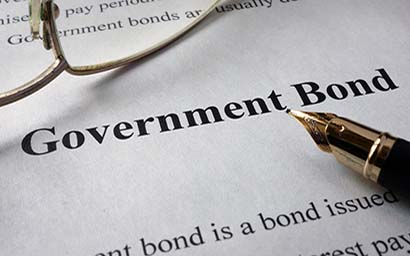Gopi Karunakaran manages bond portfolios at Ardea Investment Management and says insurers can potentially enhance yields with a lower level risk in their fixed income portfolios.
A major challenge for insurers today is trying to obtain yields without increasing risk in the most capital efficient way. Cash interest rates are hovering at around 0%, bond yields are also very low, and the level of credit spreads is very different today than 10 years ago when there was a huge spike in credit spreads that – post-crisis – gave investors a large pickup from taking credit risk.
The difference now is that credit spreads have greatly narrowed so yield pickup in credit isn’t available anymore. As a direct result of low yield, Gopi Karunakaran, a bond manager at Ardea Investment Management, highlights there is a phenomenon now that in markets is called “credit creep”.
Speaking in a recent Funds Europe webinar, Karunakaran said that, as risk-free rates and high government bond yields have dropped to low levels, the pressure on bond portfolios to gain returns has increased and to access higher returns portfolios have taken on more credit risk. Rather than allocating to high quality bonds, many have looked to the slightly risker segments of fixed income.
But this has resulted in record low bonds yields for higher risk – more risk for less return.
Since 2009 bank balance sheets have become highly constrained and the cost of capital has increased. This is why corporate bond liquidity has become structurally impaired, says Karunakaran, and insurance companies are faced with higher capital charges for lower yield.
Pure relative value
In this low yield world adopting a pure relative value strategy can be useful for capital efficient return generation, without credit risk.
Relative value investing exploits structural market inefficiencies that are created through supply/demand imbalances. It captures two securities that are closely related, have similar underlying risk characteristics but are priced inconsistently. Relative Value investing doesn’t rely on interest rate moves or market directions – low volatility performance irrespective of the market environment.
During Q1 2020 Ardea’s portfolios did well, says Karunakaran, not because they are trying to predict market directions but because their approach is non-directional. Their portfolios are constructed to remain agnostic to market stress scenarios – reliable daily liquidity, even during periods of extreme market stress.
Covid-19 has in fact magnified the relative opportunity set. Karunakaran says there is now a demand/supply tension with the government bond market. On one hand, governments are having to issue lots of bonds to fund fiscal stimulus and, on the other hand, central banks are engaging in quantitative easing/yield control.
“As they buy and sell, they create temporary demand-supply imbalances. That leads to inefficiencies in pricing and that’s what we focus on,” Karunakaran says.
As the two forces meet there is a demand/supply tension, and this is what Ardea’s opportunity set maximises, according to Karunakaran. Ardea’s relative value portfolio has been positive when other fixed income strategies such as credit have been negative, he says.
“If done in the right way, what you can do with this type of return source is package it into a portfolio where you can have very consistent low volatility performance irrespective of the market environment and with minimal correlation to other things like equities, credit or even government bonds.”
He adds of the Covid-19 turmoil: “Our portfolio did very well in that period, not because we called the market right but because this approach is fundamentally unrelated to what’s going on in markets and in fact tends to do best in highly volatile market environments.”
Volatility in the Ardea Real Outcome Fund on a 1-year basis and 3-year basis was 1.7% and 1.6%, respectively, compared to 4.7% and 4.1% in the Barclays Global Aggregate Bond Index (August 2020).
The fund returned 6.3% and 5.5% over 1 and 3 years, respectively, in sterling, and in euros achieved 5.2% and 4.4% (August 2020).
“Even investment grade credit these days struggles to achieve these kinds of returns,” says Karunakaran.
Fixed income is more than just yield
So how are insurers using relative value?
Karunakaran says insurers see relative value as a capital-efficient source of return, especially as credit has become less efficient. It is also used by them as a diversifier, given that relative value investing tends to do well in periods of stress
And it is a source of liquidity – “somewhere to park cash or use as a cash alternative,” the fund manager says.
There is a lot more to fixed income than buying and holding bonds for yield. There are a lot more things insurers can do to generate returns away from traditional levers of credit, duration and liquidity risk.
In this low yield environment, Karunakaran says Ardea is seeing a “paradigm shift” of investor mindsets and investors are becoming increasingly more open to understanding non-conventional fixed income strategies that offer more capital-efficient returns compared with traditional return sources.
*You can listen to the webinar here.
© 2020 funds europe





